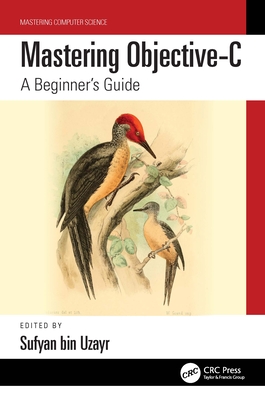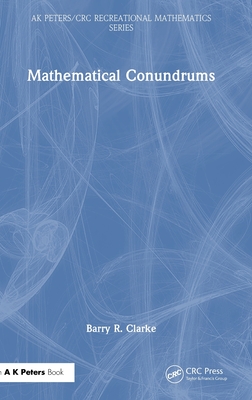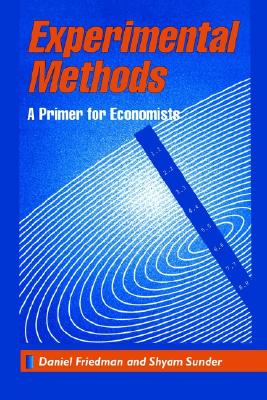图书简介
The second edition of Engineering Mechanics is specially designed as a textbook for undergraduate students of engineering. It provides a detailed and holistic treatment of the basic theories and principles of both statics and dynamics.
1. Introduction to Statics; 1.1 Introduction; 1.2 Idealization of matter; 1.2.1 Continuum; 1.2.2 Particle; 1.2.3 Rigid body; 1.2.4 Deformable body; 1.3 Space; 1.4 Scalars and vectors; 1.5 Force; 1.5.1 Force field; 1.5.2 Classification of force; 1.5.3 Force system; 1.6 Superposition and transmissibility of force; 1.7 Equilibrium; 1.8 Resultant of a force system; 1.9 Resultant and equilibrium of a coplanar, concurrent force system; 1.9.1 Triangular law of forces; 1.9.2 Parallelogram law of forces; 1.9.3 Polygon law of forces; 1.10 Resolution of a force into components; 1.11 Moment of a force about a point; 1.12 Moment of a force about a line; 1.13 Moment of a couple; 1.14 Resultant of a coplanar, non-concurrent force system; 1.15 Resultant of a non-coplanar, concurrent force system; 1.16 Resultant of a non-coplanar, non-concurrent force system; 2. Equilibrium of Forces; 2.1 Lamias theorem; 2.2 Theorem of Varignon; 2.2.1 Resultant of two like parallel forces; 2.2.2 Resultant of two unlike parallel forces; 2.3 Parallel shifting of forces; 2.4 Equivalence of force and forceacouple system; 2.5 Generalized equations of equilibrium; 2.5 Generalized equations of equilibrium; 2.6 Active and reactive forces; 2.7 Different types of supports; 2.8 Free-body diagrams; 3. Truss, Frames, and Cables; 3.1 Introduction; 3.2 Truss; 3.3 Elements of a truss; 3.4 Types of truss; 3.5 Assumptions for truss analysis; 3.6 Determinacy, stability, and redundancy; 3.7 Methods of analysis of a truss; 3.7.1 Method of joints; 3.7.2 Method of sections (Ritteras method); 3.7.3 Hybrid method; 3.8 Frames; 3.9 Method of analysis of a frame; 3.10 Suspension cables; 3.11 Elements of suspension cables; 3.12 Suspension cables subjected to point loading; 3.13 Suspension cables subjected to uniformly distributed loading; 3.13.1 Catenary cables; 3.13.2 Parabolic cables; 4. Friction; 4.1 Introduction; 4.2 Classification; 4.3 Probable mechanism; 4.4 Laws of friction; 4.5 Coefficient of friction; 4.6 Angle of friction; 4.7 Angle of repose; 4.8 Wedge friction; 4.9 Rolling friction; 4.10 Energy of friction; 4.11 Belt drives; 4.12 Types of flat belt drives; 4.13 Length of belt drives; 4.14 Friction in belt drives; 4.15 Centrifugal tension in belt drives; 4.16 Initial tension in belt drives; 4.17 Transmission of power in belt drives; 4.18 Condition of transmission of maximum power; 5. Properties of Lines, Surfaces, and Physical Bodies; 5.1 Introduction; 5.2 Centroid, centre of mass, and centre of gravity; 5.3 Analytical expressions of centroid; 5.4 Analytical expressions of centre of mass and centre of gravity; 5.5 PappusaGuldinus theorems; 5.6 Second moment of area; 5.7 Radius of gyration; 5.8 Perpendicular axis theorem for second moment of area; 5.9 Parallel axis theorem for second moment of area; 5.10 Product moment of area; 5.11 Parallel axis theorem for product moment of area; 5.12 Rotation of axes; 5.13 Principal axes and principal moments of area; 5.14 Mass moment of inertia; 5.15 Parallel axis theorem for mass moment of inertia; 5.16 Relationship between mass moment of inertia and second moment of area; 6. Virtual Work; 6.1 Introduction; 6.2 Work done by force and moment; 6.3 Virtual displacement, virtual rotation, and virtual work; 6.4 Principle of virtual work; 6.5 Stability of equilibrium; 7. Simple Lifting Machines; 7.1 Introduction; 7.2 Simple and compound machines; 7.3 Some basic definitions; 7.3.1 Effort and load; 7.3.2 Mechanical advantage; 7.3.3 Velocity ratio; 7.3.4 Efficiency and loss of energy; 7.3.5 Ideal machine; 7.3.6 Ideal effort, ideal load, and loss; 7.3.7 Reversibility and irreversibility; 7.3.8 Law of machine; 7.4 Inclined plane; 7.5 Simple screwjack; 7.6 Differential screwjack; 7.7 System of pulleys; 7.8 Weston differential pulley block; 7.9 Gear pulley block; 7.10 Simple wheel and axle; 7.11 Wheel and differential axle; 7.12 Worm and worm wheel; 7.13 Crab and winch; 7.13.1 Single purchase crab and winch; 7.13.2 Double purchase crab and winch; 7.14 Worm geared screwjack; 7.15 Worm geared pulley block; 8. Kinematics of Particles; 8.1 Introduction; 8.2 Kinematics and kinetics; 8.3 Patterns of motion; 8.4 Kinematic parameters in linear motion; 8.5 Equations of linear motion with constant acceleration; 8.6 Kinematic parameters in angular motion; 8.7 Equations of angular motion with constant acceleration; 8.8 Equations of linear motion with variable acceleration; 8.9 Relative motion along linear path; 8.10 Relative motion along curvilinear path; 8.11 Velocity and acceleration in polar reference system; 8.12 Velocity and acceleration in nat reference system; 8.13 Analysis of projectile motion; 8.13.1 Along horizontal plane; 8.13.2 Along inclined plane; 9. Kinematics of Rigid Bodies; 9.1 Introduction; 9.2 Properties of rigid body motion; 9.3 Governing kinematic equations of rigid body motion; 9.4 Fixed axis rotation of a rigid body; 9.5 Contact of two rotating rigid bodies; 9.6 Contact of a rotating rigid body with a translating rigid body; 9.7 Instantaneous centre of rotation; 10. Kinetics of Particles and Rigid Bodies 10.1 Introduction; 10.2 Newtonas laws of motion; 10.3 Forcing functions and kinematic parameters; 10.4 DaAlembertas principle; 10.5 Pure translation of a rigid body; 10.6 Fixed axis rotation of a rigid body; 10.7 Planar motion of a rigid body; 11. Principle of Work, Power, and Energy 11.1 Introduction; 11.2 Work done and its varieties; 11.3 Potential energy; 11.4 Conservative force and potential energy; 11.5 Workaenergy principle for particle; 11.6 Work done for rigid body; 11.7 Kinetic energy of rigid body; 11.8 Workaenergy principle for rigid body; 11.9 Principle of conservation of energy; 11.10 Power; 12. Principle of Impulse and Momentum 12.1 Introduction; 12.2 Linear impulse and momentum; 12.3 Angular impulse and momentum; 12.4 Principle of conservation of momentum; 12.5 Impact and its variety; 12.6 Mechanism of direct central impact; 12.7 Coefficient of restitution; 12.8 Perfectly elastic collision; 12.9 Inelastic or semi-elastic collision; 12.10 Loss of energy in direct central impact; 12.11 Mechanism of oblique central impact; 13. Mechanical Vibration; 13.1 Vibration; 13.2 Classification of vibration; 13.3 Damping and vibration; 13.4 Features of vibrating systems; 13.5 Free vibration without damping; 13.6 Free vibration with damping; 13.7 Forced vibration without damping; 13.8 Forced vibration with damping; 13.9 Pendulum motion; 13.9.1 Simple pendulum; 13.9.2 Compound pendulum; 13.9.3 Torsional pendulum
Trade Policy 买家须知
- 关于产品:
- ● 正版保障:本网站隶属于中国国际图书贸易集团公司,确保所有图书都是100%正版。
- ● 环保纸张:进口图书大多使用的都是环保轻型张,颜色偏黄,重量比较轻。
- ● 毛边版:即书翻页的地方,故意做成了参差不齐的样子,一般为精装版,更具收藏价值。
关于退换货:- 由于预订产品的特殊性,采购订单正式发订后,买方不得无故取消全部或部分产品的订购。
- 由于进口图书的特殊性,发生以下情况的,请直接拒收货物,由快递返回:
- ● 外包装破损/发错货/少发货/图书外观破损/图书配件不全(例如:光盘等)
并请在工作日通过电话400-008-1110联系我们。
- 签收后,如发生以下情况,请在签收后的5个工作日内联系客服办理退换货:
- ● 缺页/错页/错印/脱线
关于发货时间:- 一般情况下:
- ●【现货】 下单后48小时内由北京(库房)发出快递。
- ●【预订】【预售】下单后国外发货,到货时间预计5-8周左右,店铺默认中通快递,如需顺丰快递邮费到付。
- ● 需要开具发票的客户,发货时间可能在上述基础上再延后1-2个工作日(紧急发票需求,请联系010-68433105/3213);
- ● 如遇其他特殊原因,对发货时间有影响的,我们会第一时间在网站公告,敬请留意。
关于到货时间:- 由于进口图书入境入库后,都是委托第三方快递发货,所以我们只能保证在规定时间内发出,但无法为您保证确切的到货时间。
- ● 主要城市一般2-4天
- ● 偏远地区一般4-7天
关于接听咨询电话的时间:- 010-68433105/3213正常接听咨询电话的时间为:周一至周五上午8:30~下午5:00,周六、日及法定节假日休息,将无法接听来电,敬请谅解。
- 其它时间您也可以通过邮件联系我们:customer@readgo.cn,工作日会优先处理。
关于快递:- ● 已付款订单:主要由中通、宅急送负责派送,订单进度查询请拨打010-68433105/3213。
本书暂无推荐
本书暂无推荐












